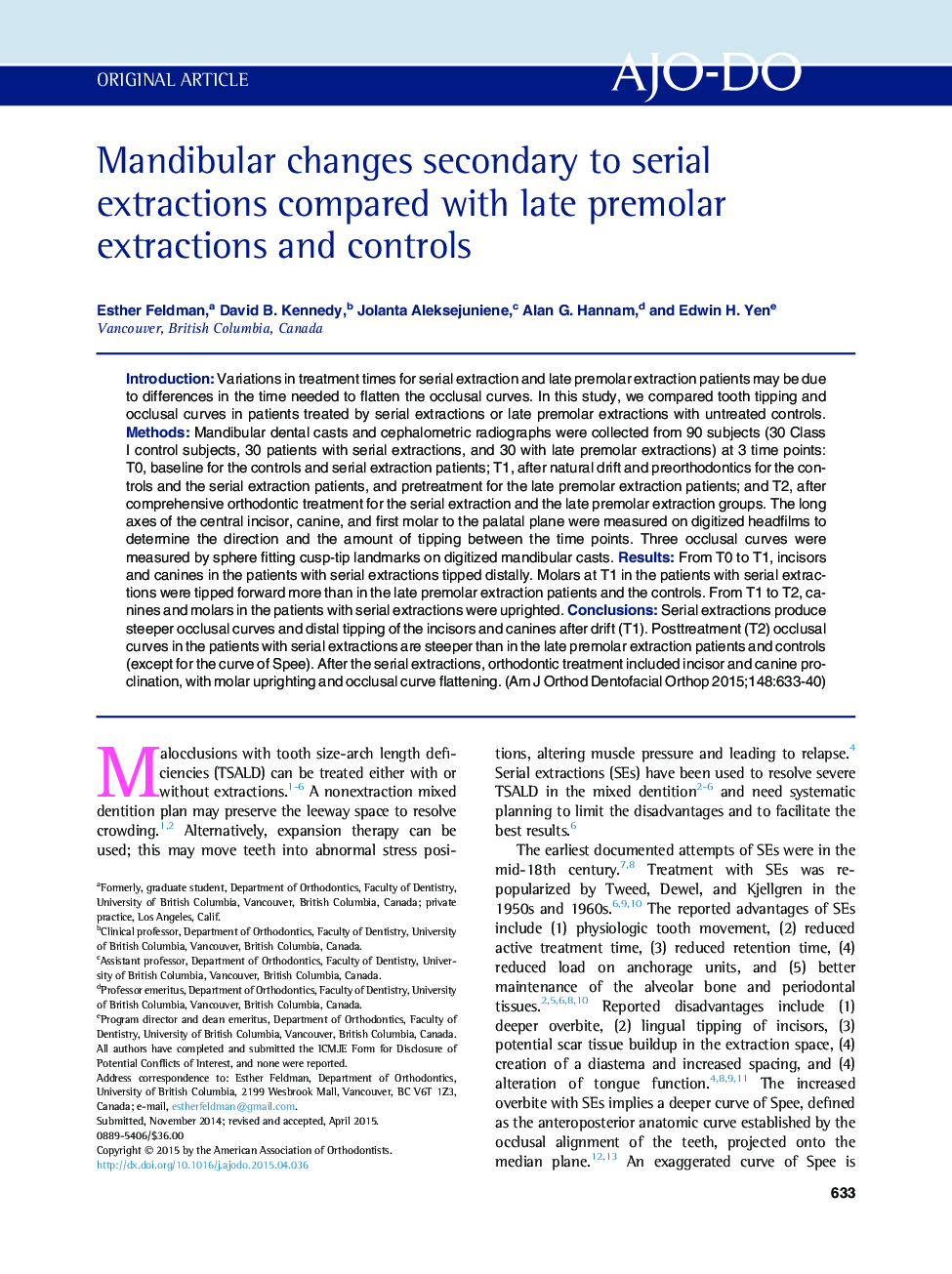| Article ID | Journal | Published Year | Pages | File Type |
|---|---|---|---|---|
| 3115869 | American Journal of Orthodontics and Dentofacial Orthopedics | 2015 | 8 Pages |
•Teeth and arch form determine occlusal curvature, an important treatment goal.•Serial and late premolar extractions produce different occlusal curvatures.•Serial extractions (SE) had smaller radii overall and steeper curvatures at T1 and T2.•Incisors and canines were tipped distally in the SE group; molars were tipped mesially at T0-T1.•Orthodontics tipped incisors and canines mesially; molars were tipped distally at T1-T2 in the SE group.
IntroductionVariations in treatment times for serial extraction and late premolar extraction patients may be due to differences in the time needed to flatten the occlusal curves. In this study, we compared tooth tipping and occlusal curves in patients treated by serial extractions or late premolar extractions with untreated controls.MethodsMandibular dental casts and cephalometric radiographs were collected from 90 subjects (30 Class I control subjects, 30 patients with serial extractions, and 30 with late premolar extractions) at 3 time points: T0, baseline for the controls and serial extraction patients; T1, after natural drift and preorthodontics for the controls and the serial extraction patients, and pretreatment for the late premolar extraction patients; and T2, after comprehensive orthodontic treatment for the serial extraction and the late premolar extraction groups. The long axes of the central incisor, canine, and first molar to the palatal plane were measured on digitized headfilms to determine the direction and the amount of tipping between the time points. Three occlusal curves were measured by sphere fitting cusp-tip landmarks on digitized mandibular casts.ResultsFrom T0 to T1, incisors and canines in the patients with serial extractions tipped distally. Molars at T1 in the patients with serial extractions were tipped forward more than in the late premolar extraction patients and the controls. From T1 to T2, canines and molars in the patients with serial extractions were uprighted.ConclusionsSerial extractions produce steeper occlusal curves and distal tipping of the incisors and canines after drift (T1). Posttreatment (T2) occlusal curves in the patients with serial extractions are steeper than in the late premolar extraction patients and controls (except for the curve of Spee). After the serial extractions, orthodontic treatment included incisor and canine proclination, with molar uprighting and occlusal curve flattening.
